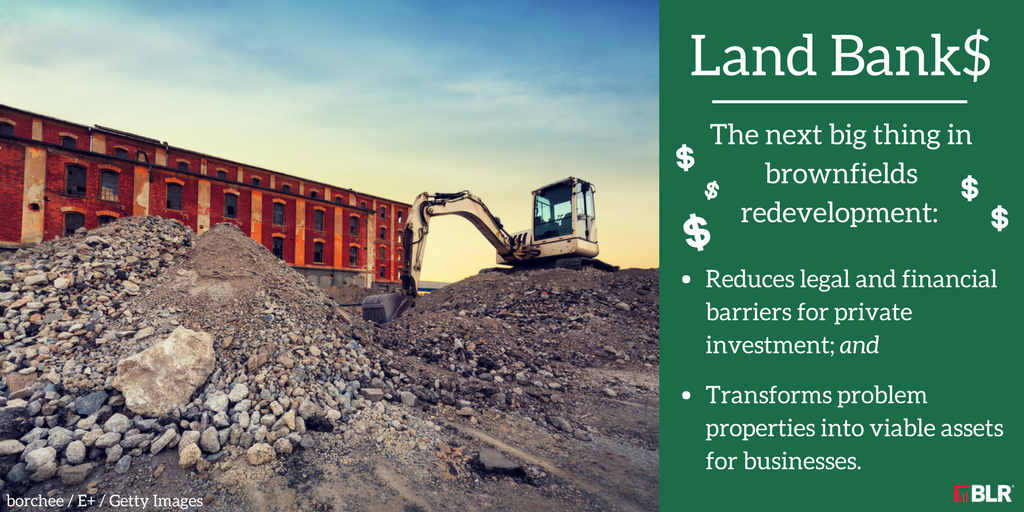At the close of its 2017 regular legislative session, the Connecticut General Assembly adopted an increasingly popular nationwide trend in brownfields remediation and redevelopment. By establishing the framework for a state brownfields land bank program, the Connecticut legislation represents a shift in the way brownfields projects are being administered around the country.
With reduced budgets and personnel, states and municipalities are turning to innovative strategies like using land banks to revitalize their brownfields programs. In addition to being a government favorite, land banks have proven especially attractive to private businesses through their ability to transform previously unappealing properties into viable assets. As one of the most highly regarded new approaches, land banks are slated to be a featured topic of discussion at a major national brownfields conference later this year.
What is a land bank?
A land bank is a governmental or nonprofit entity that acquires, remediates, and stabilizes vacant or abandoned tax-delinquent sites and works with governments, communities, economic development agencies, and other nonprofits to promote the productive reuse of the properties. Traditionally used as a tool for redeveloping residential properties following the housing foreclosure crisis, local and state governments are discovering that nonprofit land banks can be an effective means of transforming commercial and industrial brownfields sites as well.
Many delinquent and contaminated properties sit unused for years because municipalities are forced to assume ownership and lack the financial means and expertise to return them to productive use. Private investors are often unwilling to assume the risk of undertaking the projects themselves. This not only contributes to blight but it also reduces tax revenue and places additional strains on local economies. This is where land banks come in.
By contracting with a city or town, a land bank can take title to a contaminated property and more effectively spearhead the cleanup and revitalization of idle areas. State programs similar to those in New York, Michigan, and now Connecticut encourage these efforts by providing land banks with regulatory and limited liability protections, making them eligible for state and federal grants, and allowing them to accept charitable contributions to fund the cleanup. In certain cases, land banks can also be eligible for forgiveness of local property taxes.
Why should you care?
By embracing this market-based approach to brownfields remediation, state and local governments are attempting to bolster and fast-track their redevelopment programs while facing their own budgetary hurdles.
A by-product of this change in strategy has been an increase in business opportunities for companies seeking to purchase and redevelop properties that were previously buried in too much red tape. By reducing some of the legal and financial barriers that detracted private investors from pursuing these vacant and abandoned properties in the past, states have allowed land banks to be able to address the surplus of problem properties and convert them into realistically usable assets available to businesses and communities.
For example, many abandoned brownfields properties have clouded titles that create uncertainty about the true owners of the property. Many have also accumulated years of back taxes that far exceed the properties’ market values. Repair and remediation expenses can often require investments that are greater than what the market can return for the property. By eliminating or reducing the impacts of many of these financial and liability obstacles, land bank programs can undertake projects that were previously commercially unworkable. Once the remediation is complete, the land banks are then able to sell the properties to developers or companies seeking to open new facilities.
In recognition of this emerging framework, the Environmental Protection Agency (EPA) is placing a renewed focus on brownfields projects around the country. Land banks are sure to continue to be a hot topic as businesses catch on to this streamlined approach and as state and local authorities attempt to bring their programs up to speed with fewer financial and administrative resources.

